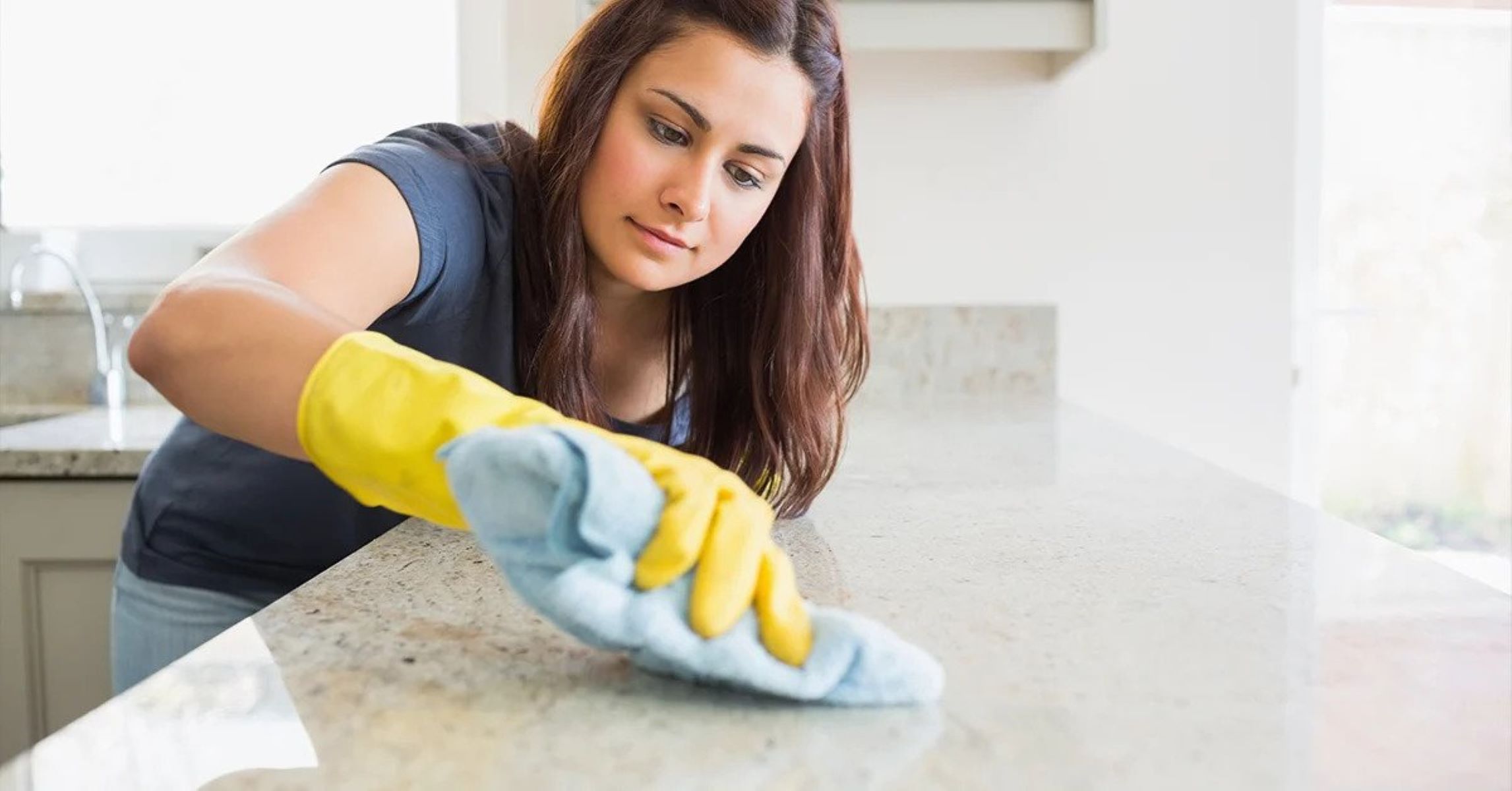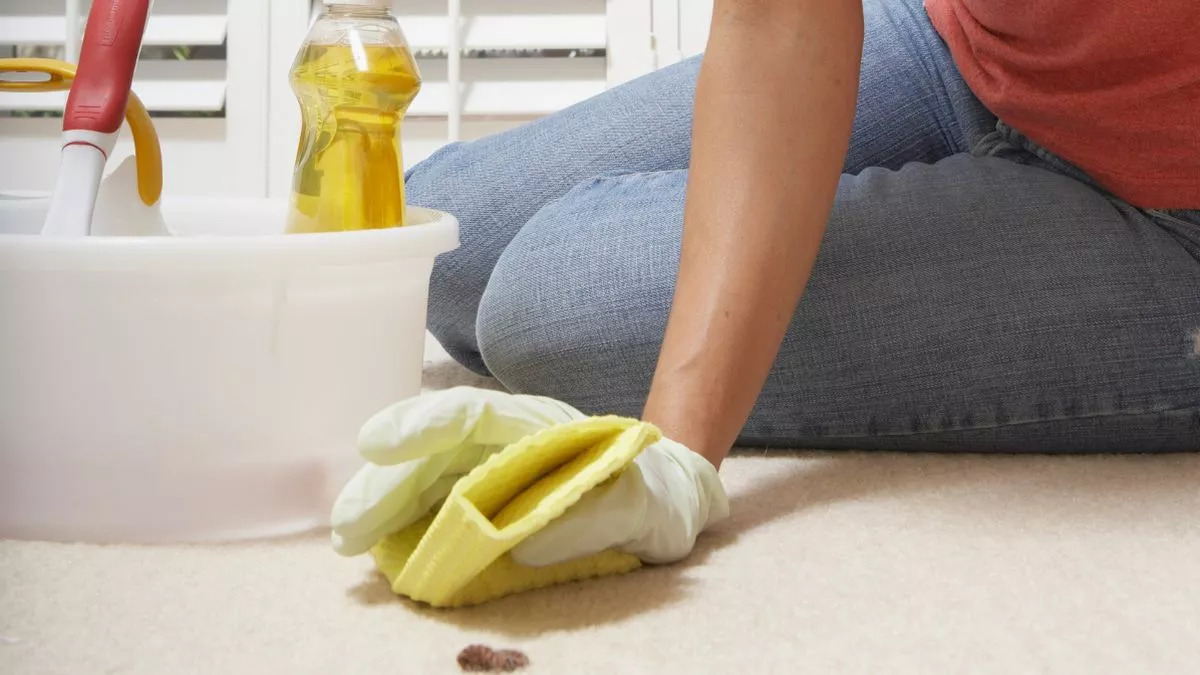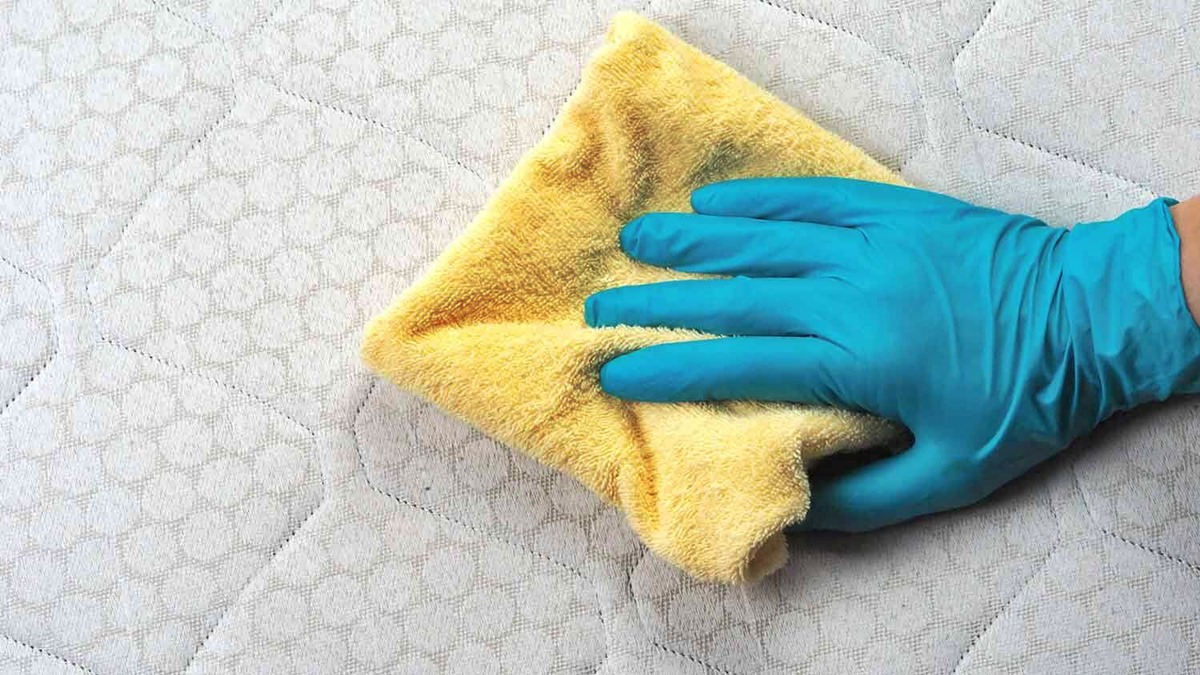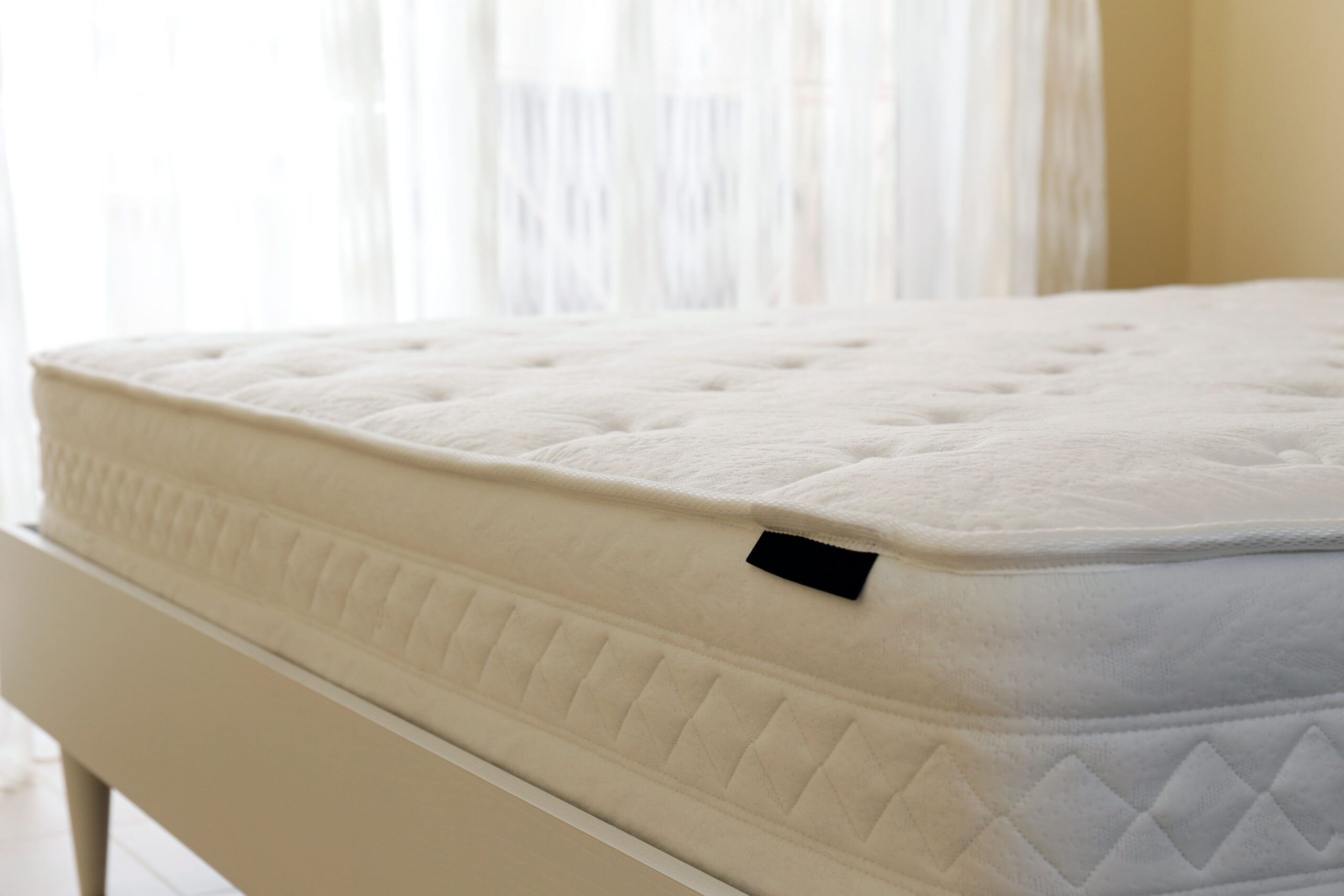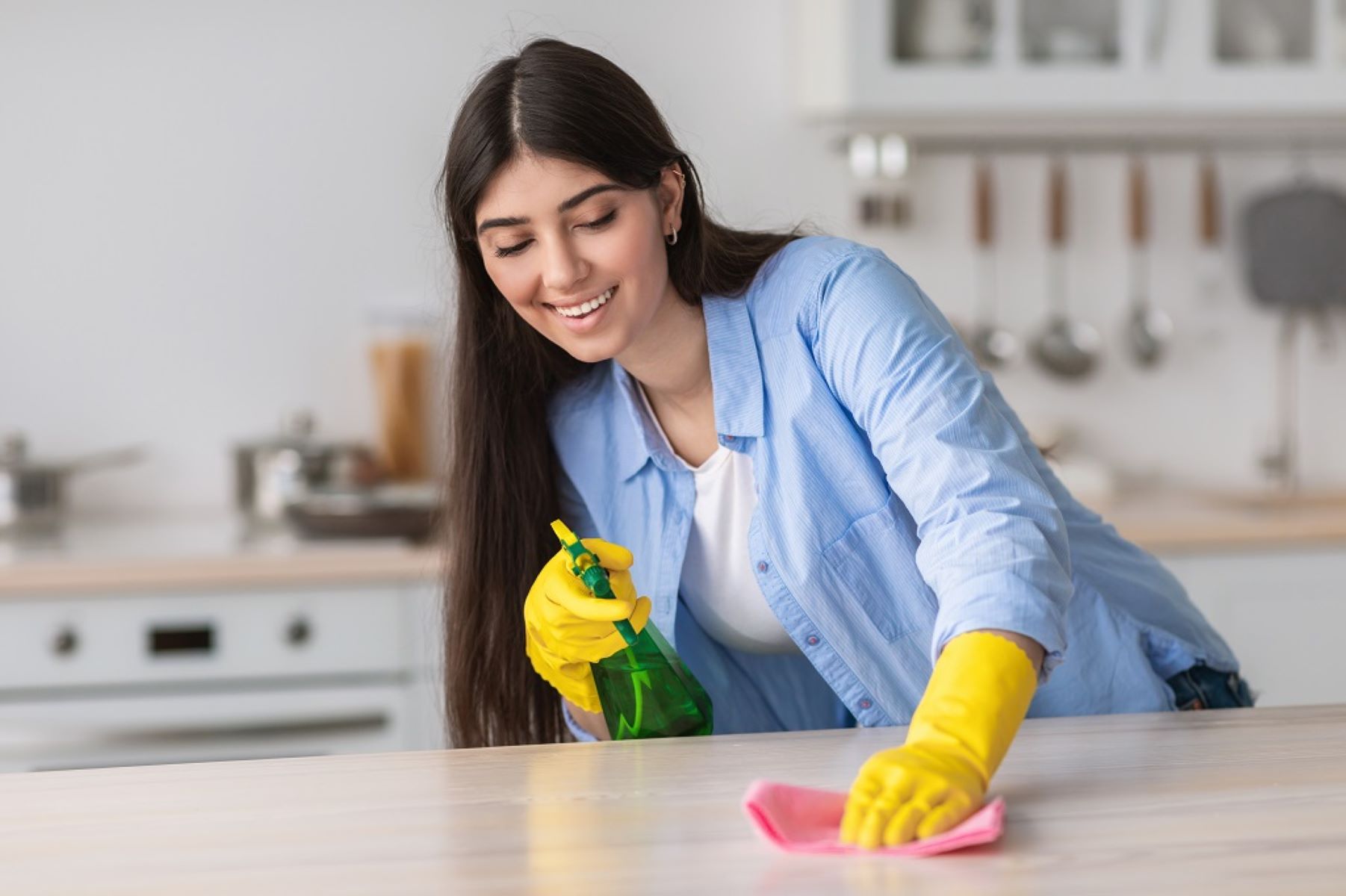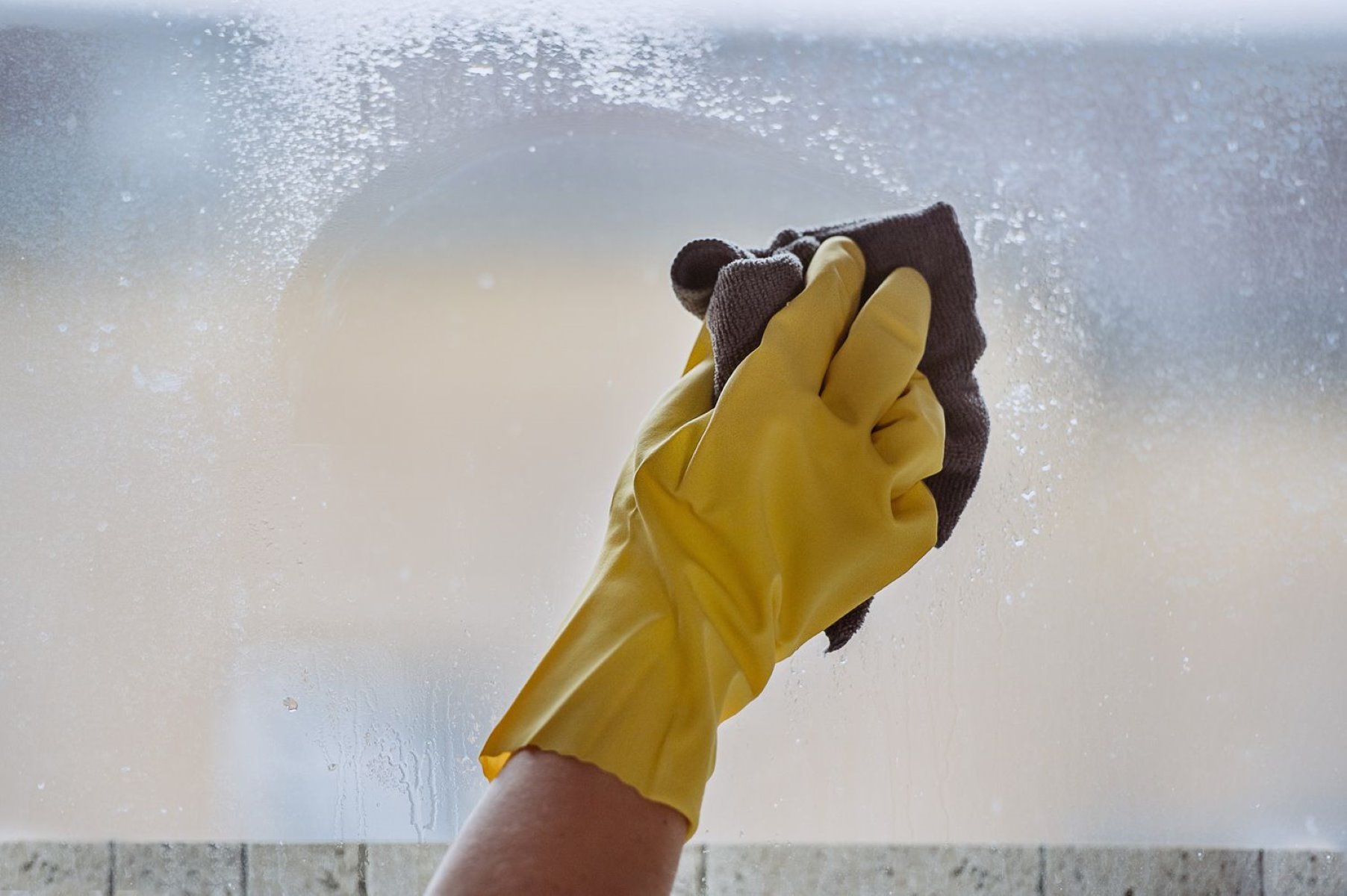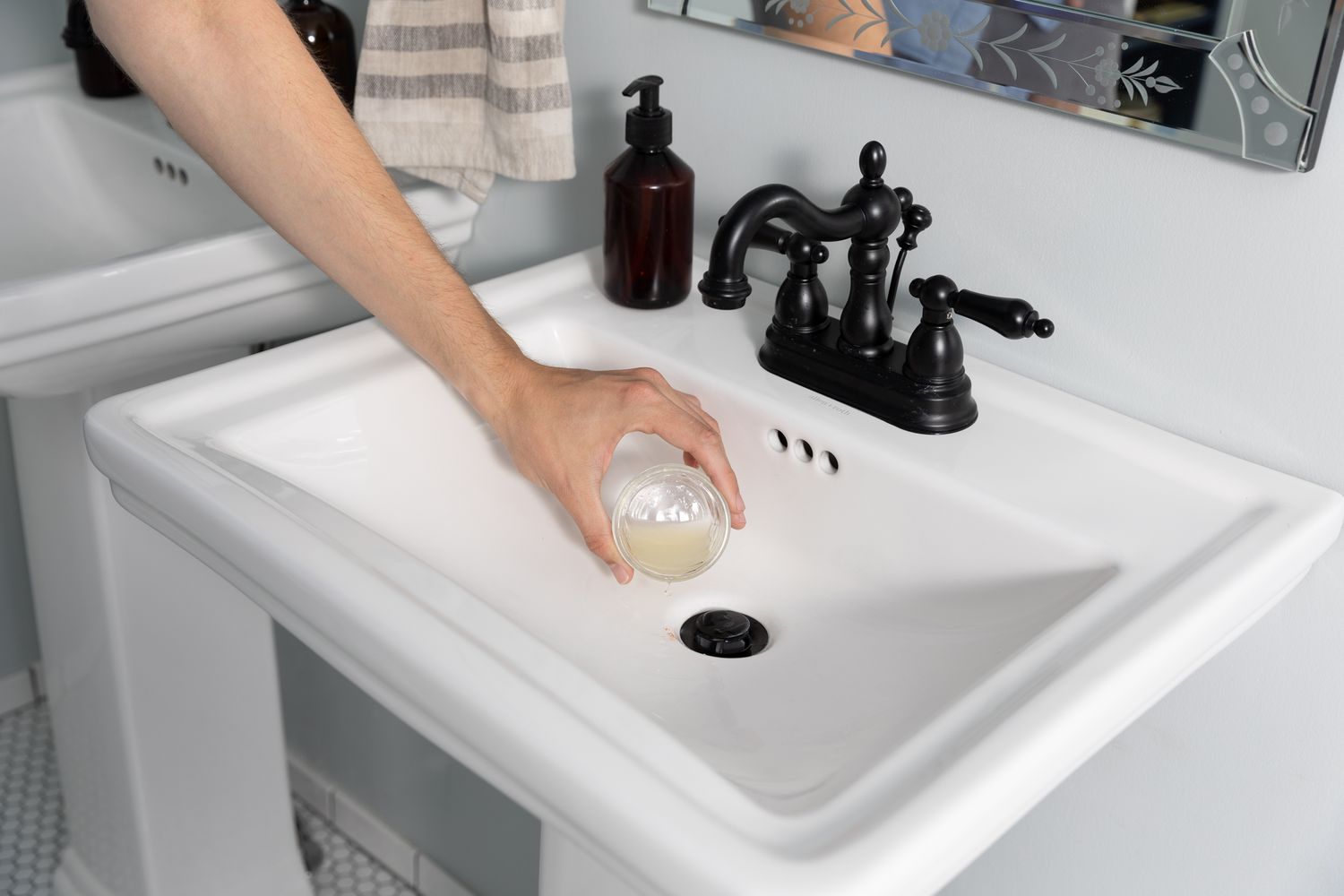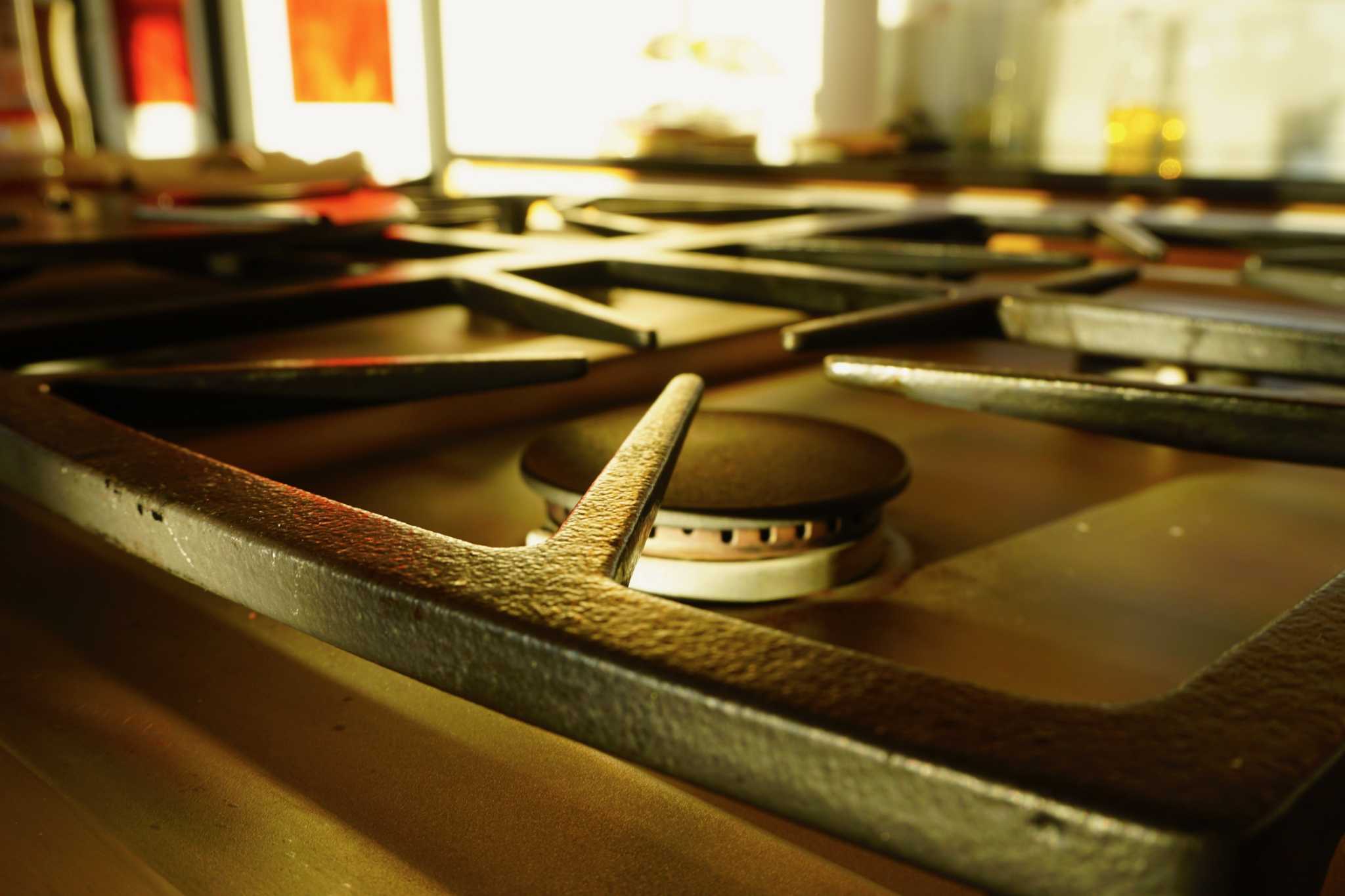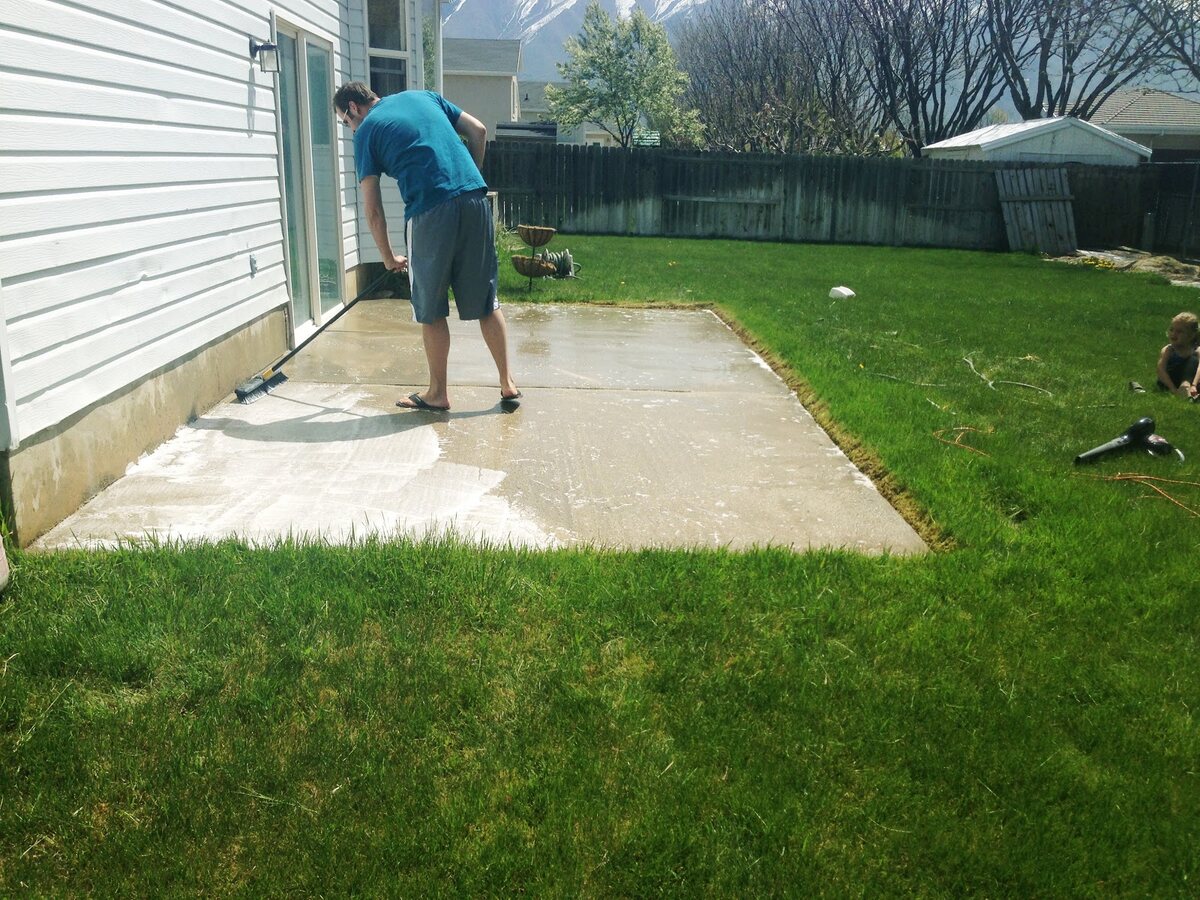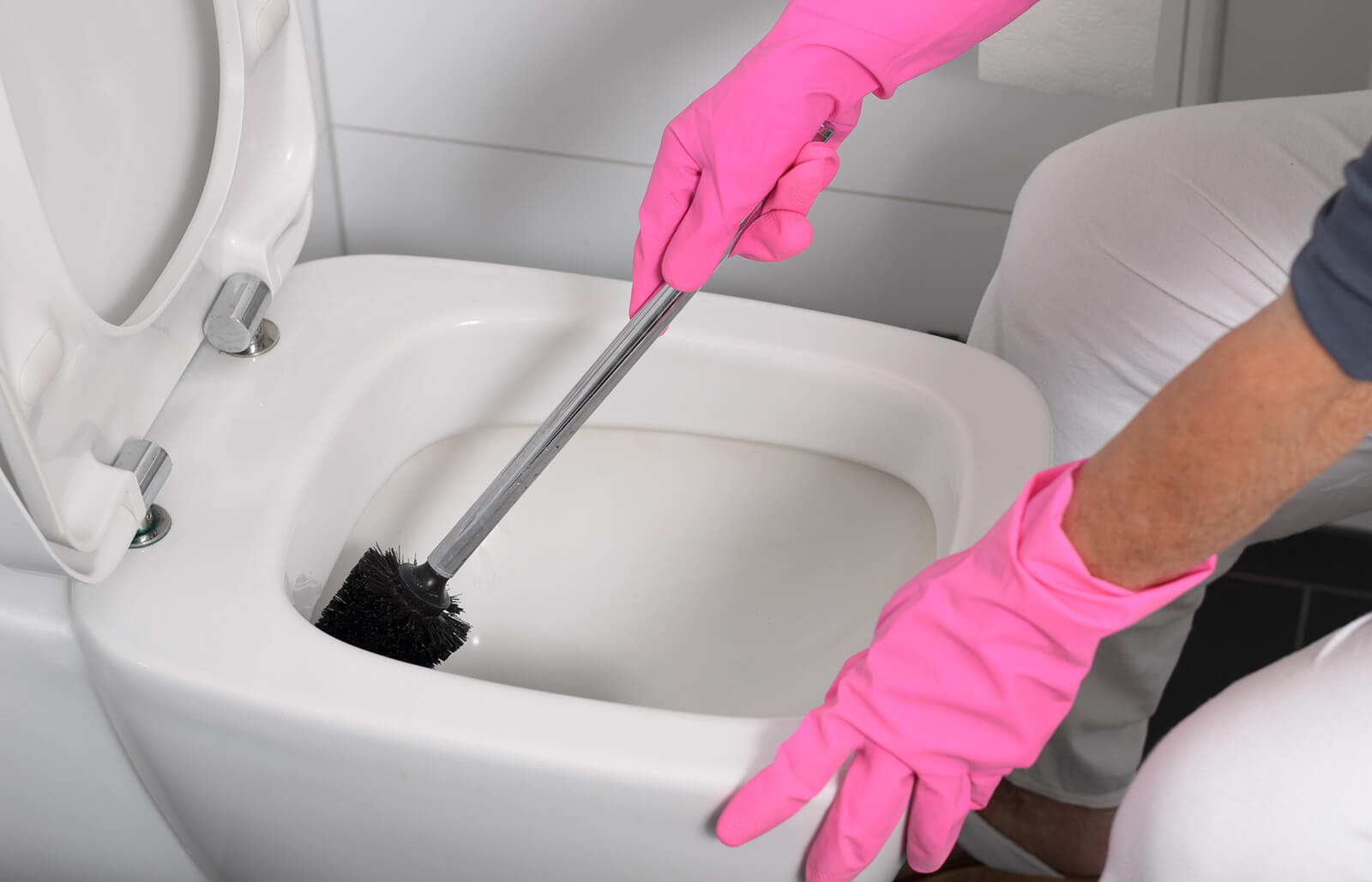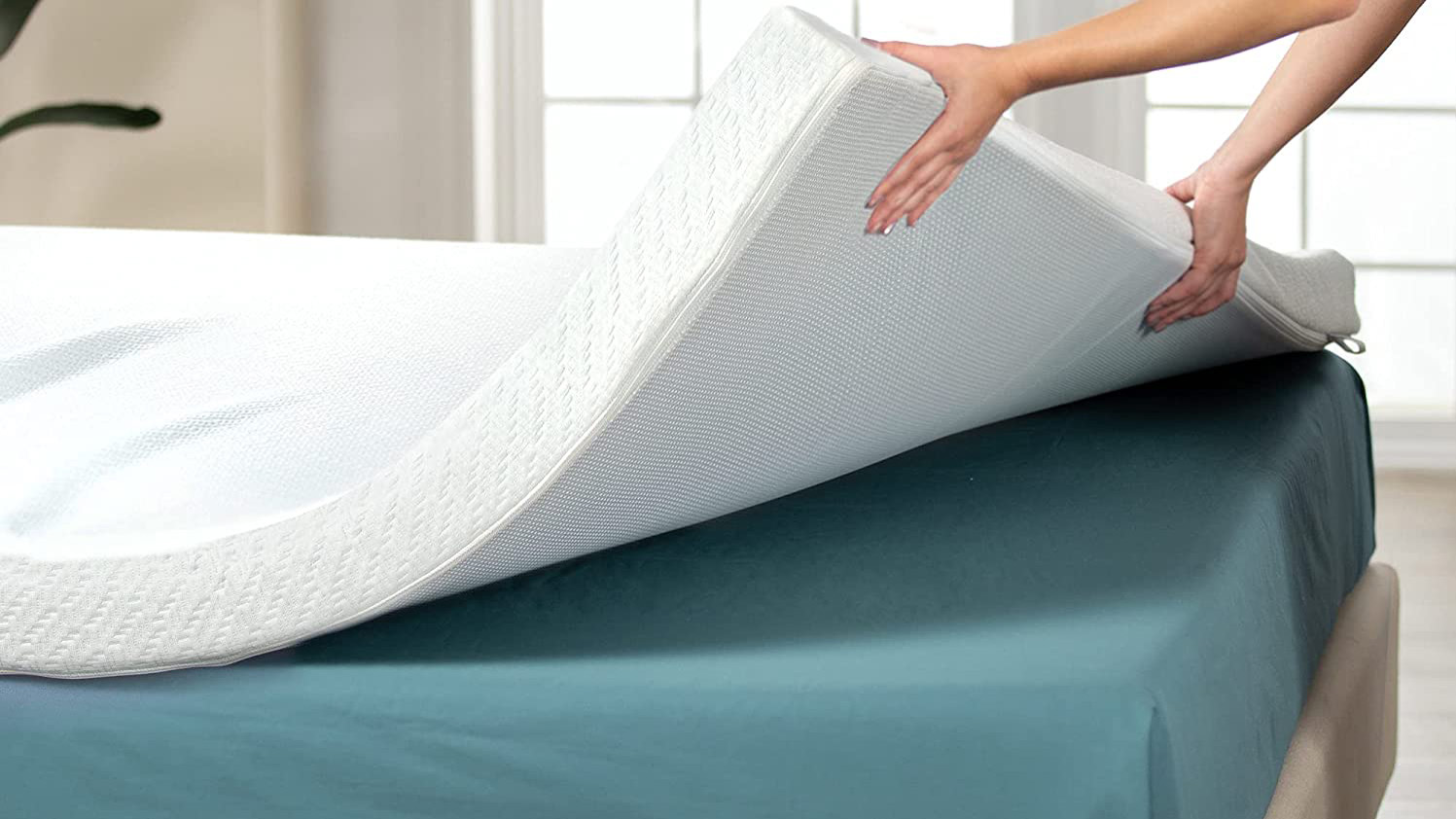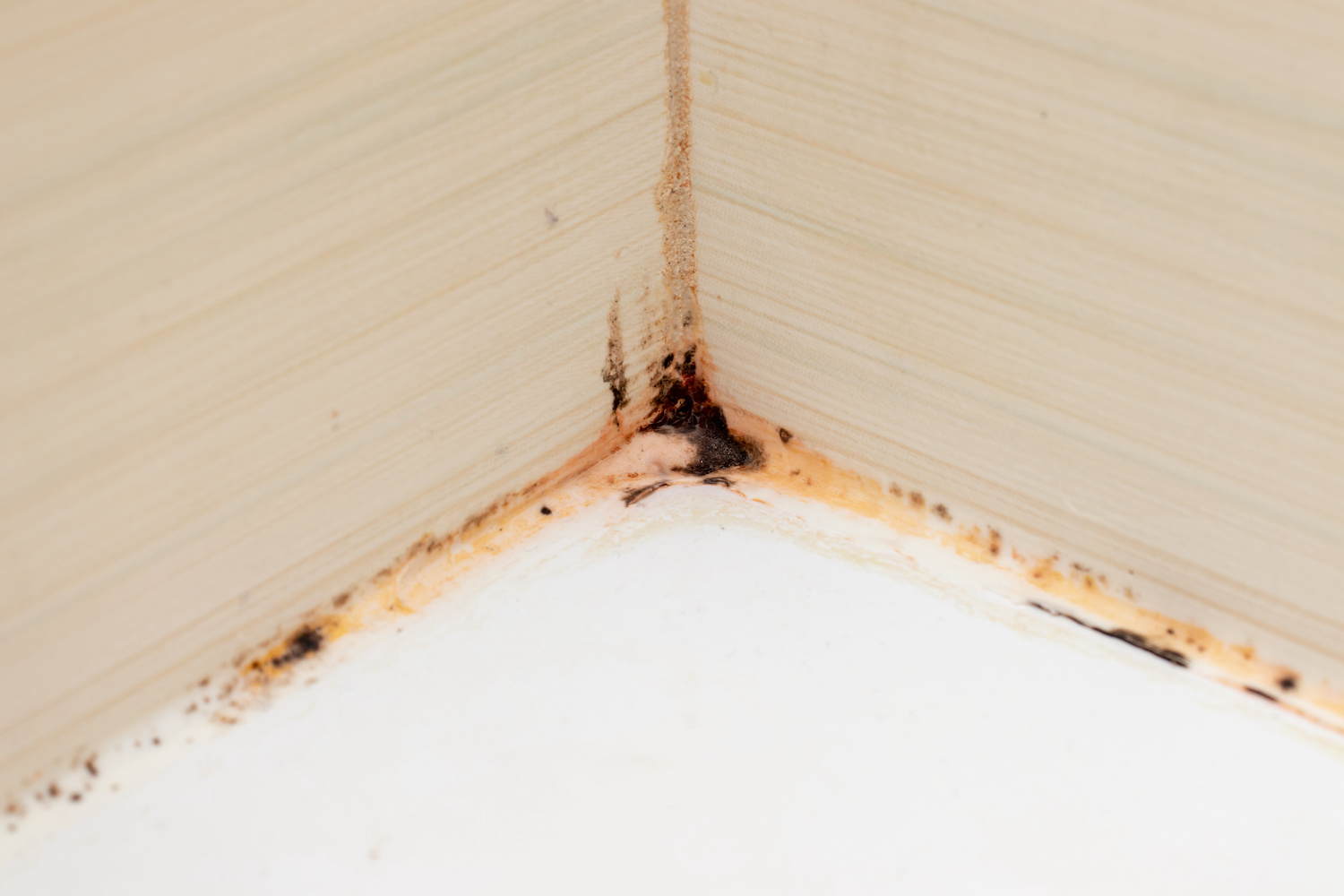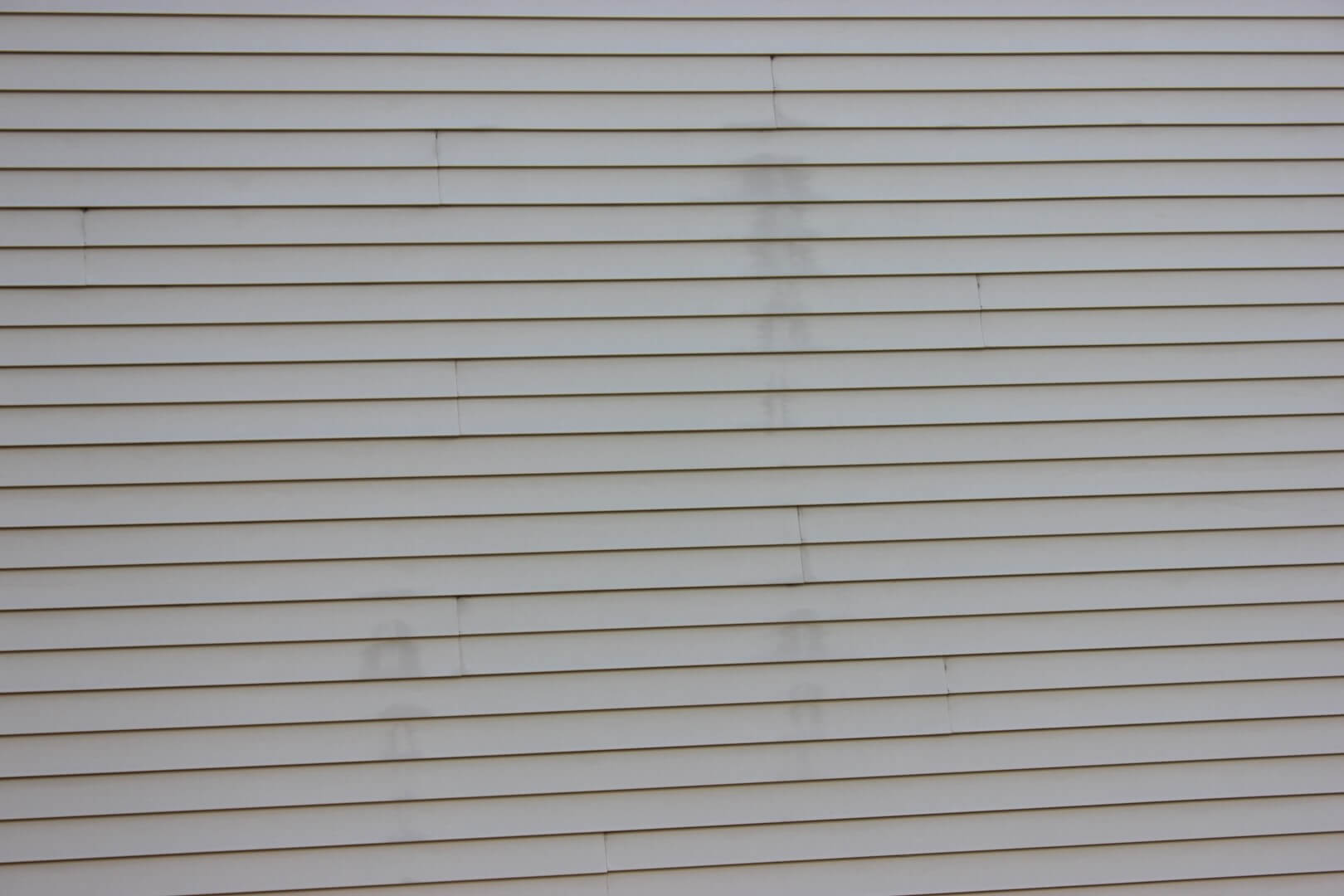Home>Furniture>Bedroom Furniture>How To Get Stains Off A Mattress
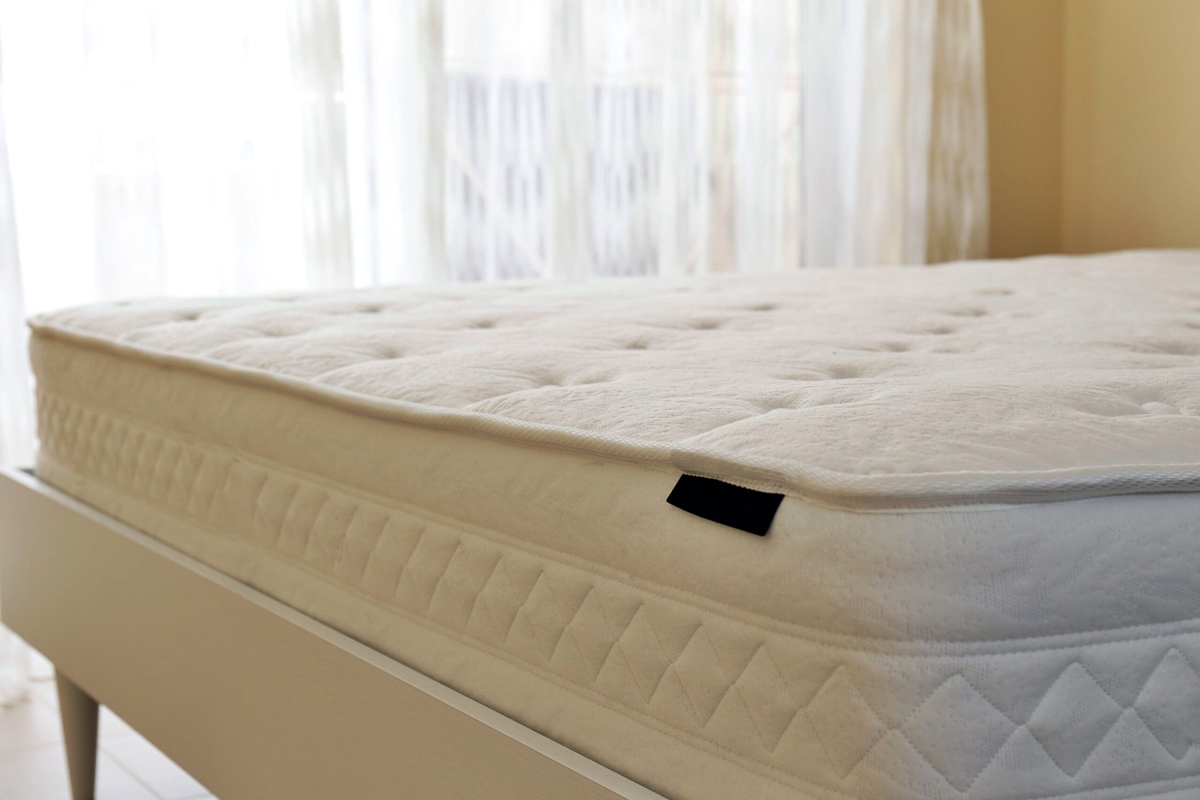

Bedroom Furniture
How To Get Stains Off A Mattress
Modified: February 18, 2024
Looking for ways to remove stains from your mattress? Check out our helpful guide on how to get stains off a mattress, featuring tips and tricks for bedroom furniture care.
(Many of the links in this article redirect to a specific reviewed product. Your purchase of these products through affiliate links helps to generate commission for Storables.com, at no extra cost. Learn more)
Introduction – Importance of keeping your mattress clean and stain-free
When it comes to creating a comfortable and hygienic sleeping environment, keeping your mattress clean and stain-free is of utmost importance. A stained mattress not only looks unappealing but can also harbor bacteria, allergens, and odors that can affect your sleep quality and overall health.
Regularly cleaning and maintaining your mattress not only helps to extend its lifespan but also ensures that you have a fresh and healthy place to rest each night. By preventing and removing stains, you not only improve the aesthetic appeal of your mattress but also create a more hygienic space for a peaceful sleep.
Stains on a mattress can come from a variety of sources – spills, accidents, perspiration, bodily fluids, or even pet accidents. Each type of stain requires a specific approach for effective removal. Ignoring stains or failing to address them promptly may result in permanent damage to the mattress fabric or the growth of mold and bacteria, leading to health issues.
Furthermore, keeping your mattress clean is especially important for individuals with allergies or respiratory conditions. Dust mites, pet dander, and other allergens can accumulate on a mattress and exacerbate allergies or asthma symptoms. Regular cleaning and stain removal help to minimize these allergens and ensure a healthier sleep environment.
Not only does maintaining a clean and stain-free mattress improve your sleep quality and comfort, but it also enhances the overall longevity of your mattress investment. By implementing proper stain removal methods and regular cleaning practices, you can extend the lifespan of your mattress and save money in the long run.
In the following sections, we will discuss common types of mattress stains, provide effective stain removal techniques, and offer tips for maintaining a clean mattress over time. By following these guidelines, you can keep your mattress fresh, hygienic, and free from unsightly stains.
Key Takeaways:
- Timely stain removal and regular mattress cleaning are essential for a fresh and hygienic sleeping environment, enhancing comfort, sleep quality, and overall well-being.
- Understanding specific stain removal techniques and implementing maintenance tips can help prevent stains, eliminate odors, and extend the lifespan of your mattress for years of restful sleep.
Read more: How To Get Mattress Stains Off
Common Types of Mattress Stains – Identifying different types of stains on mattresses – Understanding the causes and severity of each stain
A mattress can be subjected to a variety of stains, each with its own causes and level of severity. To effectively tackle these stains, it’s essential to understand their nature and the potential harm they can cause if left untreated.
1. Food and Drink Stains: These stains are common and can occur from spills or accidents while eating or drinking in bed. Foods with vibrant colors or drinks containing dyes can leave noticeable stains on the mattress fabric. If not addressed promptly, these stains can become stubborn and set-in, making them more challenging to remove.
2. Sweat Stains: Over time, mattresses can accumulate sweat stains due to nightly perspiration. Sweat stains are often yellowish and can penetrate deep into the fabric, causing unpleasant odors and promoting the growth of bacteria. Regular cleaning helps prevent the build-up of sweat stains and keeps your mattress fresh and odor-free.
3. Urine Stains: Accidents can happen, especially if you have young children or pets. Urine stains can cause not only visible discoloration but also strong odors. It’s crucial to address urine stains promptly as they can lead to the growth of bacteria and create an unsanitary sleeping environment.
4. Blood Stains: Accidental cuts or menstrual mishaps can result in blood stains on the mattress. Blood stains can be unsightly and difficult to remove if not attended to immediately. It’s important to treat blood stains promptly to prevent the potential for the transmission of bloodborne pathogens.
5. Pet Stains: If you allow your pets on your bed, accidents or bodily fluid stains can occur. These stains may include urine, vomit, or even feces. It’s crucial to address pet stains quickly to prevent them from setting in and leaving long-lasting odors.
It’s important to note that the severity of the stain can vary based on the material and fabric of the mattress. For fabric mattresses, stains may have a higher chance of penetrating the fibers, making removal more challenging. On the other hand, mattresses with a waterproof or water-resistant cover may offer some protection from stains.
By identifying the types of stains commonly found on mattresses and understanding their causes and severity, you can tailor your stain removal approach accordingly. In the next sections, we will discuss general stain removal methods as well as specific techniques for tackling different types of stains.
Preparing for Stain Removal – Gathering necessary materials and tools – Taking precautions to protect the mattress during the cleaning process
Before diving into the stain removal process, it’s important to gather the necessary materials and tools to ensure a successful and efficient cleaning. Additionally, taking precautions to protect the mattress during the cleaning process will help prevent further damage or stains.
1. Materials and Tools:
- Stain remover or cleaning solution: Choose a suitable stain remover based on the type of stain you are dealing with. There are a variety of commercial stain removers available, or you can opt for natural DIY solutions using ingredients like vinegar, baking soda, or hydrogen peroxide.
- Clean cloths or towels: These will be used to apply the cleaning solution and blot the stain.
- Cold water: It’s important to use cold water as hot water can set certain stains, making them more difficult to remove.
- Soft-bristle brush: This can be helpful for gently scrubbing stains without damaging the mattress fabric.
- Vacuum cleaner: Prior to stain removal, it’s recommended to vacuum the mattress to remove any loose dirt, dust, or debris.
2. Protecting the Mattress:
- Remove bedding and mattress covers: Start by removing all bedding, including sheets, mattress protectors, and mattress covers. This will give you direct access to the stained area.
- Blot excess liquid or remove solid residue: If the stain is fresh and liquid, blot the excess moisture using a clean cloth or paper towels. If there is solid residue, gently scrape it off using a dull knife or spoon.
- Test the cleaning solution: Before applying any cleaning solution directly to the stain, it’s recommended to test it on a small and inconspicuous area of the mattress to ensure it doesn’t cause any damage or discoloration.
- Apply cleaning solution: Following the instructions on the stain remover or DIY solution, apply a small amount to the stained area. Use a clean cloth or towel to gently dab or blot the stain without rubbing, as rubbing may spread the stain further.
- Blot and repeat: Continue blotting the stain with a clean cloth or towel until it starts to fade. Avoid oversaturating the mattress, as excessive moisture can lead to mold or mildew growth.
- Dry the mattress: Once the stain has been removed or minimized, allow the mattress to air dry completely before placing any bedding back on top. You can hasten the drying process by using a fan or opening windows to increase air circulation.
By preparing adequately and taking necessary precautions, you can efficiently and effectively remove stains from your mattress without causing any additional damage. In the next sections, we will explore general stain removal methods as well as specific techniques for addressing different types of stains.
General Stain Removal Methods – Using common household items to treat stains on a mattress – Step-by-step instructions for effective stain removal
When it comes to removing stains from your mattress, there are several general methods that utilize common household items. These methods can be effective in treating a wide range of stains and are often more affordable and readily available compared to commercial stain removers. Here are step-by-step instructions for effective stain removal:
1. Blot the stain: Start by blotting the stained area with a clean cloth or paper towels to remove any excess moisture or residue. Do not rub the stain, as this can cause it to spread further.
2. Baking soda paste: For fresh stains or odors, create a paste by mixing baking soda with a small amount of water. Apply the paste to the stain and let it sit for about 30 minutes to absorb the moisture and neutralize odors.
3. Vacuum: After the baking soda has absorbed the moisture, use a vacuum cleaner with an upholstery attachment to remove the dried paste and any remaining residue.
4. Vinegar solution: Mix equal parts of white vinegar and cold water in a spray bottle. Lightly mist the stained area with the vinegar solution, then blot the stain with a clean cloth or towel. Vinegar helps break down the stain and eliminate odors.
5. Hydrogen peroxide: Hydrogen peroxide can be effective in removing tough stains like blood or urine. Apply a small amount of hydrogen peroxide directly to the stain, let it sit for a few minutes, then blot with a clean cloth. Be cautious when using hydrogen peroxide on colored mattresses, as it may cause discoloration.
6. Salt paste: For sweat stains, create a paste by mixing salt with a small amount of water. Apply the paste to the stained area and gently rub it in using a soft-bristle brush. Allow the paste to sit for a few hours before vacuuming it off.
7. Sunlight: If possible, place the mattress in direct sunlight for several hours. Sunlight can help naturally bleach and disinfect the mattress, reducing the appearance of stains and eliminating odors.
Remember, it’s essential to test any cleaning solution or method on a small, inconspicuous area of the mattress before applying it to the stain to ensure it doesn’t cause any damage or discoloration. Additionally, always follow the manufacturer’s instructions and recommendations when dealing with stains on specific mattress materials or fabrics.
By applying these general stain removal methods, you can effectively treat a wide range of stains on your mattress using common household items. However, for specific types of stains, such as urine, blood, sweat, or food/drink stains, there may be additional techniques or considerations to keep in mind. We will explore these specific stain removal techniques in the following sections.
Use a mixture of hydrogen peroxide, dish soap, and baking soda to create a stain-removing solution. Gently blot the stain with the solution and let it sit for 15 minutes before blotting it dry.
Specific Stain Removal Techniques – Addressing specific types of stains such as urine, blood, sweat, and food/drink stains – Tailoring the cleaning approach for each type of stain
While the general stain removal methods mentioned earlier can be effective for many stains, certain types of stains require specific techniques to ensure optimal results. Here we will discuss the targeted stain removal techniques for urine, blood, sweat, and food/drink stains, and how to tailor the cleaning approach for each type:
1. Urine Stains:
- Blot the urine stain as soon as possible to remove excess moisture. Avoid rubbing, as it can spread the stain further.
- Create a mixture of equal parts white vinegar and cold water. Lightly spray or blot the stain with the vinegar solution to neutralize odor.
- After applying the vinegar solution, sprinkle baking soda over the stain. Let it sit for several hours or overnight to absorb any remaining moisture and odors.
- When the baking soda has dried, vacuum it up using a vacuum cleaner with an upholstery attachment.
2. Blood Stains:
- If the blood stain is fresh, rinse it immediately with cold water to dilute and remove as much of the blood as possible.
- Create a paste by mixing hydrogen peroxide and a small amount of mild detergent. Apply the paste to the blood stain and gently scrub it with a soft-bristle brush.
- Allow the paste to sit on the stain for about 15 minutes before rinsing it off with cold water.
- Blot the area to remove excess moisture and allow the mattress to air dry completely.
3. Sweat Stains:
- Create a paste by mixing equal parts hydrogen peroxide and baking soda.
- Apply the paste to the sweat stains using a soft-bristle brush, gently working it into the fabric.
- Allow the paste to sit for at least an hour before vacuuming it off or using a damp cloth to wipe away the paste residues.
4. Food/Drink Stains:
- Blot the stain immediately to remove any excess liquid or residue.
- If the stain is still fresh, mix a mild detergent with cold water and apply it to the stain using a clean cloth. Blot the stain gently until it starts lifting.
- If the stain has set, create a paste with equal parts vinegar and baking soda. Apply the paste to the stain and let it sit for about 30 minutes before blotting it off.
It’s important to note that the earlier you address the stains, the better chances you have of successful removal. Always follow the instructions of the cleaning agents or homemade solutions being used, and remember to test them on a small, inconspicuous area of the mattress before applying them to the stain.
If you find these specific stain removal techniques challenging or if the stains persist, consider seeking professional mattress cleaning services. They have the expertise and specialized equipment to effectively treat stubborn stains without causing damage to your mattress.
Now that we have covered specific stain removal techniques, we will discuss how to deodorize your mattress and provide tips for maintaining a clean mattress in the following sections.
Read more: How To Get Sweat Stains Off A Mattress
Deodorizing the Mattress – Eliminating odors and refreshing the mattress after stain removal – Utilizing natural remedies or commercial products for effective deodorization
After successfully removing stains from your mattress, it’s important to address any lingering odors and refresh the mattress to create a clean and pleasant sleeping environment. Deodorizing your mattress can help eliminate odors caused by stains, sweat, or other sources. Here are some effective methods for deodorizing your mattress:
1. Baking Soda: Baking soda is a powerful natural deodorizer that can help absorb and neutralize odors. After thoroughly cleaning the mattress, sprinkle a generous amount of baking soda over the entire surface, focusing on the previously stained areas. Use a clean cloth or a soft-bristle brush to gently spread the baking soda and work it into the fabric. Let the baking soda sit for several hours or overnight, allowing it to absorb the odors. Finally, vacuum the baking soda using a vacuum cleaner with an upholstery attachment to remove all traces of it.
2. Fresh Air and Sunlight: If weather permits, taking your mattress outside on a sunny day can be an effective way to naturally freshen and deodorize it. The sunlight helps to kill bacteria and eliminate odors. Place the mattress in a clean, dry area and expose it to direct sunlight for several hours. Remember to flip the mattress to ensure both sides are exposed to the sunlight. The fresh air and natural UV rays will help eliminate any remaining odors.
3. Essential Oils: Essential oils not only add a pleasant aroma to your mattress but also have natural antibacterial properties. Dilute a few drops of your favorite essential oil, such as lavender, tea tree, or eucalyptus, in water and lightly mist it over the mattress surface. Allow the essential oil mist to dry completely before putting any bedding back on the mattress. The fragrance of the essential oil will leave your mattress smelling fresh and clean.
4. Commercial Mattress Deodorizers: If you prefer using commercial products, there are mattress deodorizers available specifically designed to neutralize odors and refresh the fabric. These products usually come in a spray form, allowing you to easily apply them to the surface of your mattress. Follow the instructions provided by the manufacturer for the best results.
Regardless of the method you choose, always ensure that the mattress is completely dry before putting any bedding back on it. Moisture can lead to the growth of mold and mildew, which can cause further odors and damage to your mattress.
By following these deodorizing methods, you can eliminate odors and enjoy a fresh-smelling mattress. However, it’s important to remember that regular maintenance and prevention are key to keeping your mattress clean and odor-free in the long term.
In the next section, we will provide tips for maintaining a clean mattress and preventing stains and odors from developing in the first place.
Maintaining a Clean Mattress – Tips for preventing stains and keeping the mattress clean in the long term – Regular maintenance routines to extend the lifespan of your mattress
Maintaining a clean mattress is crucial not only for your comfort but also for ensuring its longevity. By following these tips and implementing regular maintenance routines, you can prevent stains, keep your mattress clean, and extend its lifespan:
1. Use a mattress protector: Investing in a waterproof or water-resistant mattress protector is one of the best ways to prevent stains. The protector acts as a barrier, shielding the mattress from spills, accidents, and other sources of stains. It also helps to protect against allergens, dust mites, and bed bugs.
2. Wash your bedding regularly: Sheets, pillowcases, and other bedding should be washed regularly to keep them clean and free from dirt, sweat, and oils. Clean bedding not only promotes better sleep hygiene but also helps to prevent any transfer of stains or odors to the mattress surface.
3. Vacuum your mattress: Vacuuming your mattress on a regular basis helps to remove dust, dust mites, and other debris that can accumulate over time. Use a vacuum cleaner with an upholstery attachment and go over the entire surface of the mattress, paying attention to the seams and crevices.
4. Rotate and flip your mattress: To ensure even wear and minimize the development of body impressions, rotate your mattress regularly. This helps to distribute the weight and pressure across different parts of the mattress. Some mattresses can also be flipped, which helps to further extend their lifespan.
5. Avoid eating and drinking in bed: While it may be tempting to enjoy a snack or beverage in bed, doing so increases the risk of spills and stains on your mattress. Try to keep food and drinks confined to designated areas to minimize the chances of accidental stains.
6. Deal with stains promptly: If you do encounter a stain, address it as soon as possible. The longer a stain sits, the more difficult it becomes to remove. Refer back to the stain removal techniques mentioned earlier in this article for guidance.
7. Air out your mattress: Every few months, on a sunny and dry day, take the opportunity to air out your mattress. Remove all bedding and place the mattress in a well-ventilated area. The fresh air and sunlight can help eliminate any trapped odors and keep your mattress smelling fresh.
8. Avoid excessive moisture: Moisture can lead to mold and mildew growth, which not only causes odors but can also damage your mattress. Be cautious when cleaning stains or using any liquid-based cleaning solutions, ensuring that you don’t oversaturate the mattress. Properly dry the mattress before putting any bedding back on.
By incorporating these maintenance tips into your routine, you can prevent stains, reduce the accumulation of allergens, and extend the lifespan of your mattress. With regular care, your mattress will remain clean, comfortable, and supportive for years to come.
To conclude, a clean and stain-free mattress not only enhances your sleep experience but also contributes to a healthier sleeping environment. By following the techniques and tips mentioned in this article, you can effectively remove stains, eliminate odors, and maintain a clean mattress for years of restful sleep.
Conclusion – Recap of key points discussed in the article – Importance of timely stain removal and regular mattress cleaning
In this comprehensive guide, we have covered various aspects of maintaining a clean and stain-free mattress. Let’s summarize the key points discussed and emphasize the importance of timely stain removal and regular mattress cleaning:
We started by highlighting the significance of keeping your mattress clean and stain-free. A stained mattress not only looks unappealing but can also harbor bacteria, allergens, and odors that can affect your sleep quality and overall health.
We then went on to discuss common types of mattress stains, including food and drink stains, sweat stains, urine stains, blood stains, and pet stains. Understanding the causes and severity of each type of stain is crucial for tailoring the cleaning approach and effectively removing them.
Next, we emphasized the importance of preparing for stain removal by gathering the necessary materials and tools. We also discussed the importance of taking precautions to protect the mattress during the cleaning process, ensuring that you don’t cause further damage or stains.
We explored general stain removal methods that utilize common household items, providing step-by-step instructions for effective stain removal. These methods included using baking soda, vinegar solution, hydrogen peroxide, and salt paste, among others.
For specific types of stains such as urine, blood, sweat, and food/drink stains, we offered targeted stain removal techniques. These techniques involved using appropriate solutions, such as vinegar and water for urine stains, hydrogen peroxide and detergent for blood stains, and salt paste for sweat stains.
After stain removal, we discussed how to deodorize the mattress and eliminate any remaining odors. This can be done using baking soda, sunlight exposure, essential oils, or commercial mattress deodorizers.
Lastly, we provided essential tips for maintaining a clean mattress to prevent stains and extend its lifespan. These tips included using a mattress protector, washing bedding regularly, vacuuming the mattress, rotating and flipping it, avoiding eating and drinking in bed, dealing with stains promptly, and properly drying the mattress to avoid excessive moisture.
In conclusion, timely stain removal and regular mattress cleaning are crucial for maintaining a clean and hygienic sleeping environment. By following the techniques, tips, and routines discussed throughout this article, you can prevent stains, eliminate odors, and extend the lifespan of your mattress. A clean and stain-free mattress not only enhances your comfort and sleep quality but also contributes to overall health and well-being. So, don’t overlook the importance of keeping your mattress clean – start implementing these practices today for a fresh and revitalized sleeping experience.
Frequently Asked Questions about How To Get Stains Off A Mattress
Was this page helpful?
At Storables.com, we guarantee accurate and reliable information. Our content, validated by Expert Board Contributors, is crafted following stringent Editorial Policies. We're committed to providing you with well-researched, expert-backed insights for all your informational needs.
